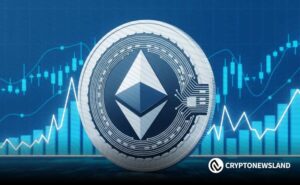- SEI holds firm at $0.19 while buyers prepare for a move toward $0.23 which could trigger the next rally stage.
- The chart shows a clear three phase structure with projected gains leading to final targets near $1.26 by 2026.
- Volume and structure confirm accumulation strength suggesting SEI could build momentum once $0.23 is reclaimed.
SEI is currently trading around $0.19, sitting just below a crucial support level that has historically acted as a strong accumulation zone. The token’s chart indicates that this range has repeatedly served as a foundation for trend reversals and renewed market interest.
According to the analysis, if SEI reclaims and holds above $0.23, momentum could quickly shift upward. The structure, supported by historical accumulation patterns, positions SEI for a potential multi-leg recovery phase. The setup shows that scaling positions in three distinct accumulation stages could offer a calculated risk-to-reward profile for investors.
A breakdown from this level previously resulted in a short-term decline of 25.55%, yet the structure remains intact. The analyst noted that selling pressure appears exhausted while market structure shows resilience. This has raised market expectations that SEI might soon rebound from its lower range and begin a steady climb.
The pivotal question remains: Can SEI sustain its accumulation base and ignite the next major upside wave toward 2026 targets?
Accumulation Phase Aligns With Fibonacci-Based Reversal Targets
The TradingView chart depicts SEI forming a classic descending wedge structure, a formation often associated with accumulation and breakout potential. The pattern connects multiple lower highs with consistent horizontal support, suggesting a tightening range before a possible upward move.
The outlined setup identifies five technical targets for a potential bullish continuation: $0.43, $0.54, $0.70, $0.91, and $1.26. Each target aligns with Fibonacci extension levels that trace previous breakout structures in SEI’s historical price movement. Analysts note that surpassing the initial resistance near $0.23 could open the door for phase one of this recovery sequence.
Volume analysis also shows that market participation has been consistent within the $0.18 to $0.23 range, hinting at buyer accumulation. The structure’s integrity remains strong despite the recent drawdown, indicating that a reclaim of higher levels may confirm the beginning of the next expansion phase.
Historically, this range has coincided with reversal behavior, and traders are closely observing whether SEI will replicate that outcome once again. Should price action move above $0.23 with sustained strength, technical signals may confirm the start of a new bullish sequence aimed toward the higher Fibonacci targets.
Market Outlook Suggests a Potential Three-Phase Climb
The broader setup indicates that SEI could progress through three major accumulation-to-expansion phases based on the visual pattern. The first phase involves reclaiming the $0.23 level, followed by a measured advance to $0.43, and ultimately a breakout-driven rally toward $1.26. Each phase corresponds with charted resistance zones and measured breakout projections derived from prior wave movements.
According to the chart shared by @seiIntern_ on October 19, 2025, the structure remains bullish as long as SEI maintains its current range. Momentum indicators align with reduced selling pressure, signaling potential reversal timing as market liquidity stabilizes.
If the pattern continues, SEI may follow a gradual trend toward $0.43, then extend to the midrange zone around $0.70 before testing the upper structure near $1.26. Each price level represents a phase completion within the defined Fibonacci grid, contributing to a technical framework for measured market expansion.
Traders view the ongoing accumulation as a sign of preparation rather than capitulation. As long as SEI continues to consolidate within its historical range and structure remains intact, the setup may continue to attract technical buyers looking for long-term recovery potential.


